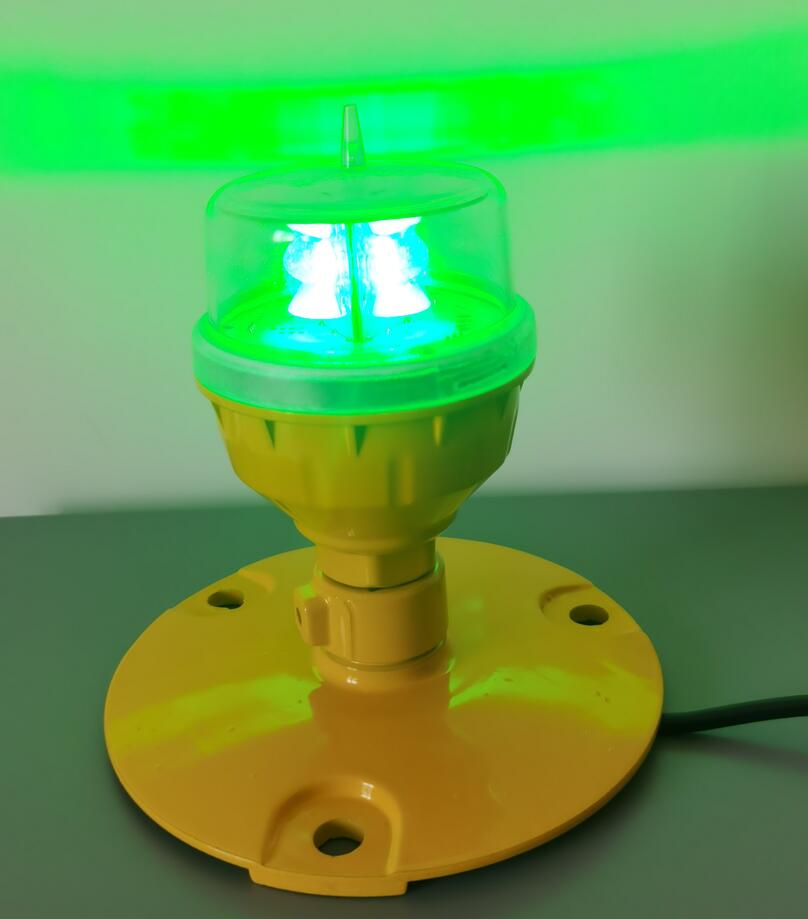Lighting System Heliport: The Intelligent Ecosystem for Vertical Aviation Safety
In the dynamic world of vertical aviation, where precision and safety are non-negotiable, the evolution of heliport illumination has transcended beyond simple lighting fixtures to become a fully integrated lighting system heliport. This sophisticated ecosystem of synchronized components does more than mark a landing zone—it provides intelligent visual guidance, enhances situational awareness, and ensures operational safety under the most challenging conditions. This article explores the critical components, technological advancements, and strategic importance of modern heliport lighting systems.
Beyond Basic Lights: The System Approach to Heliport Safety
A modern lighting system heliport represents a holistic approach to aviation safety, integrating multiple components that work in concert to guide pilots through approach, hover, and touchdown phases. Unlike standalone lights, these systems provide contextual visual information that adapts to different operational scenarios and environmental conditions.
The complexity of urban environments, emergency medical service requirements, and offshore operations demands more than basic illumination. It requires a system that can communicate with pilots, adjust to changing conditions, and provide fail-safe operation when visibility is compromised. This systems approach has become the standard for critical heliport operations worldwide.
Core Components of a Modern Heliport Lighting System
A comprehensive lighting system heliport typically integrates several key components:
Perimeter Lighting: LED fixtures defining the Touchdown and Lift-Off Area (TLOF) with precise color and intensity specifications
Approach Lighting: Guidance systems providing visual cues during final approach, including raised or inset directional lights
Wind Indicator: Illuminated wind cones or tetrahedrons that provide real-time wind information

Control and Monitoring Systems: Intelligent controllers that manage light intensity, system status, and remote operations
Emergency Backup: Redundant power systems ensuring continuous operation during primary power failure
Visual Aids: Supplementary markers including hazard beacons, identification lights, and status indicators
The Technology Revolution in Heliport Lighting
Modern lighting system heliport solutions incorporate several transformative technologies:
LED Revolution: Solid-state lighting providing superior brightness, energy efficiency, and longevity compared to traditional technologies
| lighting system heliport |
Smart Control Systems: Microprocessor-based controllers enabling remote monitoring, automatic intensity adjustment, and system diagnostics
IoT Integration: Network-connected systems that provide real-time status updates and predictive maintenance alerts
Solar Hybrid Options: Self-sufficient power systems for remote locations or backup requirements
Adaptive Lighting: Systems that automatically adjust intensity based on ambient light conditions and weather
Revon Lighting: Engineering Excellence in Heliport Systems
As China's foremost manufacturer of helipad light and complete lighting systems, Revon Lighting has established itself as the benchmark for quality and innovation in vertical aviation lighting. The company's systems approach integrates cutting-edge technology with uncompromising reliability, setting new standards for heliport safety worldwide.
Revon Lighting's lighting system heliport solutions exemplify engineering excellence:
Integrated Design: Seamless compatibility between all system components ensures optimal performance
Premium Materials: Aerospace-grade aluminum, tempered glass, and advanced polymers ensure durability in harsh environments
Precision Engineering: Computer-optimized optical systems deliver perfect photometric performance meeting ICAO and FAA standards
Smart Technology: Built-in intelligence for remote monitoring, automatic diagnostics, and adaptive operation
Global Certification: Comprehensive compliance with international aviation regulations and safety standards
What distinguishes Revon Lighting is their understanding that a lighting system heliport must perform flawlessly in critical situations. This philosophy drives their rigorous testing protocols and quality assurance processes, ensuring every system delivers exceptional reliability when it matters most.
Design Considerations for Optimal System Performance
Implementing an effective lighting system heliport requires careful planning and consideration of multiple factors:
Operational Requirements: Matching system capabilities to specific operational needs (EMS, offshore, urban, military)
Environmental Conditions: Accounting for weather patterns, temperature extremes, and corrosion factors
Airspace Considerations: Integration with surrounding airspace and obstacle lighting requirements
Power Infrastructure: Assessing power availability and backup requirements
Maintenance Access: Designing for easy maintenance without disrupting operations
Future Expansion: Planning for system upgrades and additional features
The Economic and Safety Case for Integrated Systems
Investing in a comprehensive lighting system heliport delivers significant benefits:
Enhanced Safety: Reduced approach and landing risks through improved visual guidance
Operational Efficiency: Extended operational hours and capability in reduced visibility conditions
Cost Effectiveness: Lower energy consumption, reduced maintenance, and longer service life
Regulatory Compliance: Meeting all international standards and certification requirements
Risk Reduction: Minimizing accident potential and associated liabilities
Future Trends in Heliport Lighting Systems
The evolution of lighting system heliport technology continues with several emerging trends:
Predictive Analytics: AI-driven systems that anticipate maintenance needs and optimize performance
Enhanced Connectivity: Integration with air traffic management systems and aircraft avionics
Sustainable Solutions: Solar-powered systems with energy storage for complete operational independence
Advanced Materials: Self-cleaning surfaces and damage-resistant configurations
Customized Solutions: Configurable systems tailored to specific operational environments
Implementation Best Practices
Successful deployment of a lighting system heliport requires adherence to best practices:
Professional Assessment: Comprehensive site evaluation and operational requirement analysis
System Integration: Seamless incorporation of all components into a unified system
Quality Installation: Expert installation following manufacturer specifications and aviation regulations
Training and Documentation: Comprehensive operator training and maintenance documentation
Ongoing Support: Regular maintenance programs and technical support availability
Conclusion: The Foundation of Modern Vertical Aviation
The evolution of lighting system heliport technology represents a fundamental advancement in aviation safety. These integrated systems have transformed from simple visual aids to intelligent safety ecosystems that actively contribute to operational success. As urban air mobility expands and heliport operations become more complex, the importance of reliable, high-performance lighting systems continues to grow.
Through the expertise of manufacturers like Revon Lighting, the aviation industry benefits from systems that combine technological innovation with proven reliability. Their commitment to excellence ensures that every lighting system heliport not only meets current requirements but anticipates future needs in vertical aviation.
In an era where air mobility is becoming increasingly critical to transportation infrastructure, medical services, and emergency response, advanced lighting systems provide the foundation for safe and efficient operations. The future of vertical aviation will be built on these intelligent systems that guide aircraft safely to their destinations, regardless of conditions or challenges.
